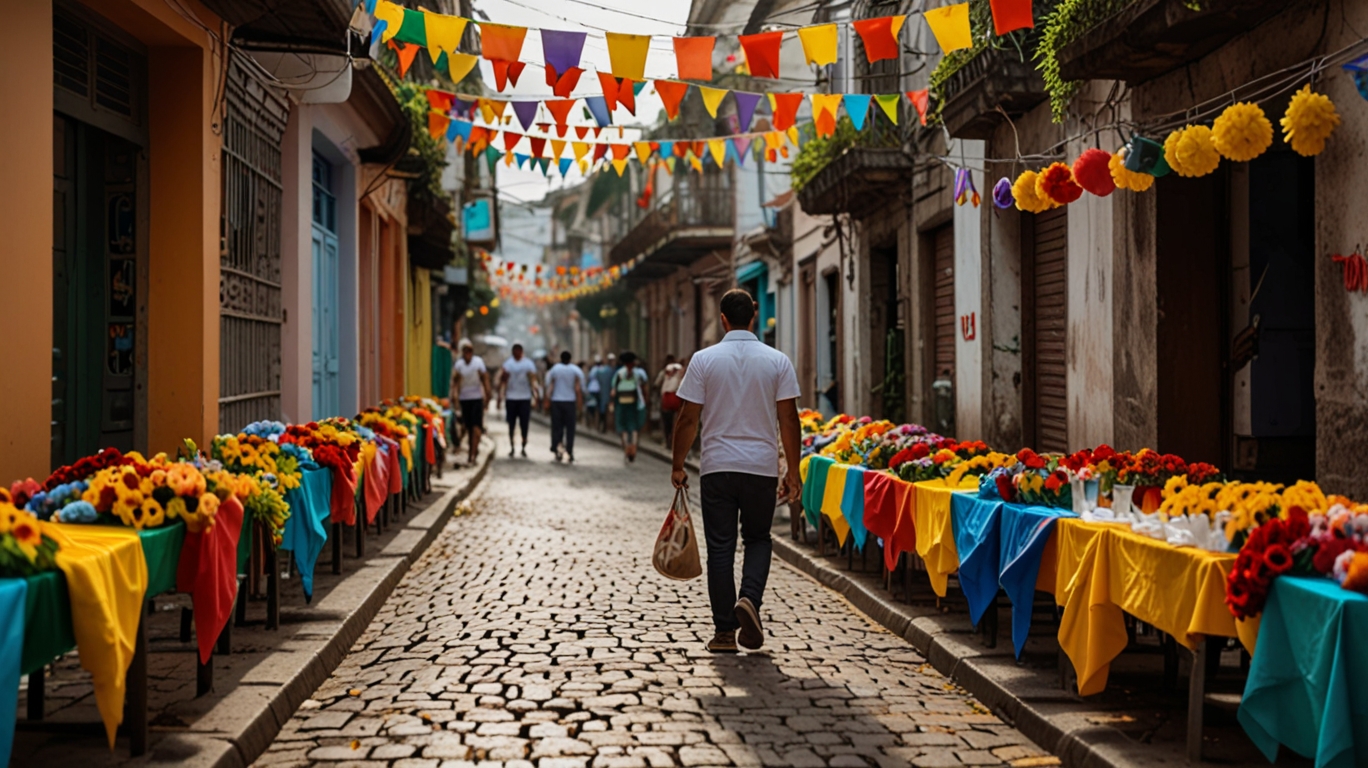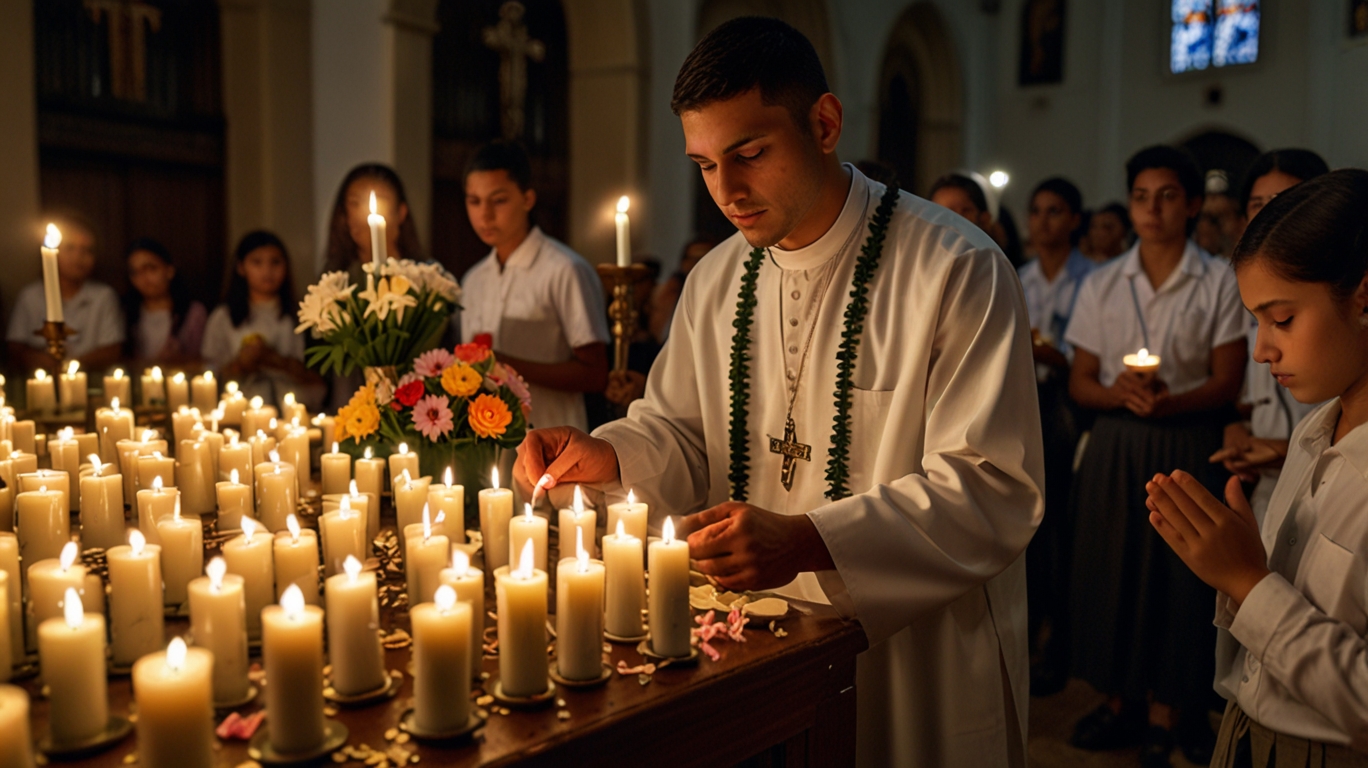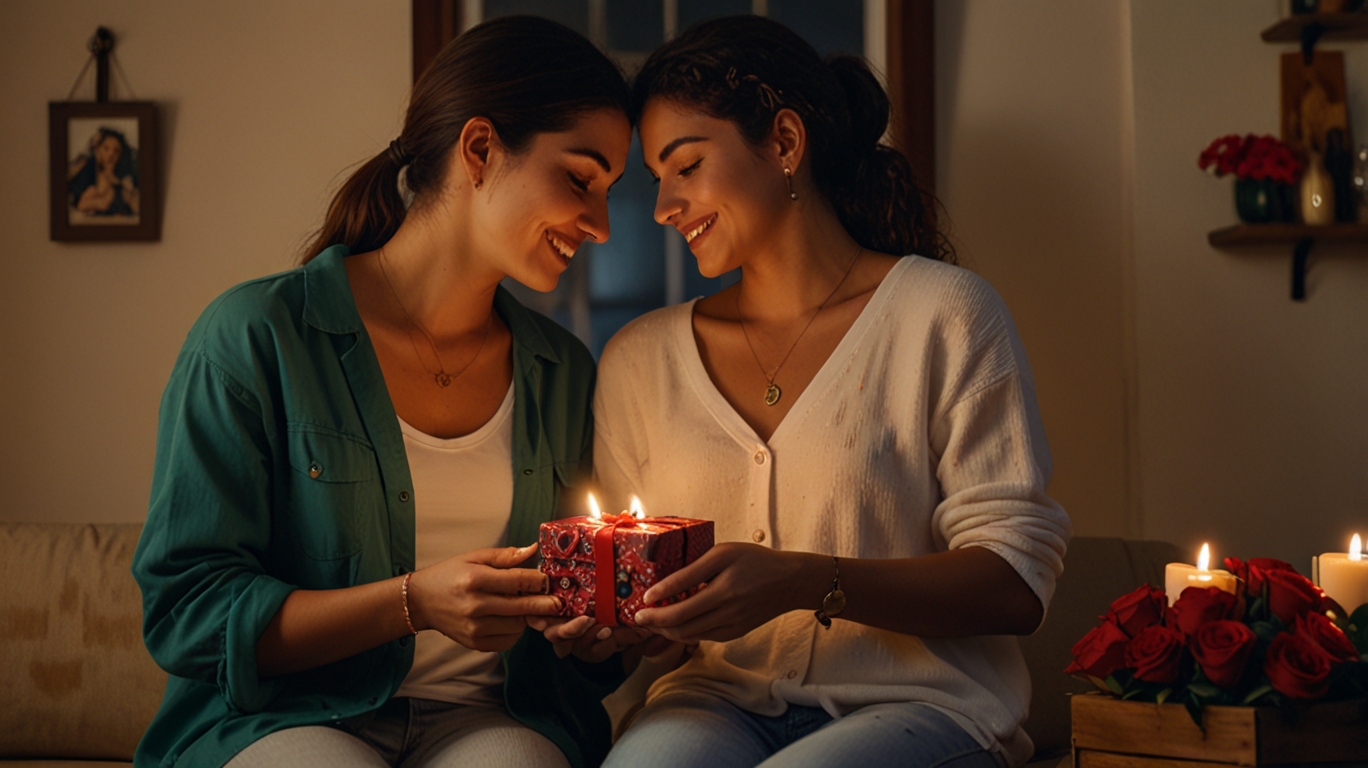Romantic Traditions from Brazil You’ll Want to Copy


When most people think of Valentine’s Day, the first thing that comes to mind is February 14, a date that is celebrated across much of the world with flowers, chocolates, and heart-shaped decorations. But in Brazil, love has its own unique calendar day and a rich tapestry of traditions that set it apart from the rest of the globe. Known as Dia dos Namorados, or “Lovers’ Day,” this holiday is held every June 12, the eve of Saint Anthony’s Day, and it is celebrated with a blend of religious devotion, heartfelt gestures, culinary indulgence, and cultural vibrancy. Rather than being just another opportunity for commercial gift-giving, Dia dos Namorados is deeply rooted in Brazilian history and spirituality, carrying a sense of cultural pride and connection to community. What makes it particularly fascinating is that it is not just about couples enjoying a romantic evening together but also about families, friends, and communities acknowledging love in its many forms. This distinctive blend of festivity and intimacy has made Dia dos Namorados one of the most meaningful celebrations in Brazil, and it’s no surprise that many people around the world might find inspiration in its practices. From faith-driven rituals at church to couples swaying to samba under the stars, this Brazilian tradition is rich with lessons on how to celebrate love in ways that feel both profound and joyous.
The Spiritual Roots of Dia dos Namorados

At the heart of Dia dos Namorados lies a connection to spirituality, specifically tied to Saint Anthony of Padua, known affectionately in Brazil as Santo Antônio. Unlike Valentine’s Day in many countries, which is largely secular and commercialized, Brazil’s celebration intertwines romance with faith. Saint Anthony is considered the patron saint of marriage, and it is believed that he blesses couples with long-lasting unions. On June 12 and the days surrounding it, churches hold special masses, and people—especially women who are single or seeking love—turn to the saint in prayer, hoping for guidance in matters of the heart. Rituals called “simpatias” are especially popular during this time. These are small acts of devotion or symbolic gestures performed with the belief that they can bring good luck in love. For instance, some women place a statue of Saint Anthony upside down until their prayer for a partner is answered, while others light candles and recite traditional prayers asking for his blessing. Beyond these practices, entire communities may come together in church courtyards where music, food stalls, and shared prayers create a balance of spirituality and festivity. What makes this aspect of Dia dos Namorados so compelling is how it grounds the concept of love in something larger than material exchanges—it ties romance to hope, destiny, and divine blessing. It’s a reminder that love, in Brazilian tradition, is seen as a sacred bond that deserves both celebration and spiritual reverence.
Thoughtful Gift-Giving Beyond the Commercial

While gift-giving is a universal part of Valentine’s Day worldwide, Brazilians approach it with a sense of intimacy and creativity that goes beyond the ordinary. Instead of relying solely on store-bought items like roses and chocolates, many couples put effort into creating gifts that carry personal meaning. Handwritten love letters, scrapbooks filled with photographs, or handcrafted items are common, as they serve as reminders of shared memories and milestones in a relationship. Matching outfits, customized jewelry, or engraved accessories also hold special significance, symbolizing the union of two individuals in a tangible way. Many Brazilians also emphasize the element of surprise, arranging gifts in unique settings, such as hiding them in unexpected places or presenting them during a romantic outing. The culture of personalization is deeply ingrained in Dia dos Namorados traditions, where gifts are not merely exchanged but are carefully curated to tell a story of the relationship itself. Even the way these gifts are presented is important—wrapped in vibrant paper, paired with heartfelt notes, or given alongside a meaningful gesture such as a serenade or a poem. This approach makes the celebration less about spending money and more about demonstrating thoughtfulness, creativity, and emotional connection. In many ways, it transforms gift-giving into an art form that reflects the uniqueness of each couple’s bond.
Romantic Dinners with Brazilian Flavor

No celebration of love in Brazil would be complete without the presence of food, which holds an integral place in the culture. On Dia dos Namorados, couples often choose to dine at restaurants offering special romantic menus, but many also prefer to prepare home-cooked meals filled with traditional Brazilian flavors. These meals are not just about eating—they are about creating an atmosphere of warmth, intimacy, and shared joy. For some, the evening begins with appetizers such as pão de queijo (cheese bread) or savory pastéis, followed by main dishes like feijoada, a hearty black bean and pork stew, or moqueca, a fragrant seafood dish simmered in coconut milk and dendê oil. Regional delicacies also play a role, depending on where in Brazil couples are celebrating. Desserts, naturally, bring sweetness to the occasion, with brigadeiros, beijinhos, or passion fruit mousse often being favorites. Many couples also enjoy fine wine, caipirinhas, or tropical fruit cocktails to pair with their meals. Dining together, whether at a fancy restaurant or at home by candlelight, becomes a ritual of connection. Cooking together is especially cherished, as it allows couples to collaborate in the kitchen, laugh, taste-test, and share in the experience of creating something with love. This ritualistic approach to food highlights how Dia dos Namorados is not only about the symbolic acts of romance but also about savoring sensory pleasures that strengthen bonds. It is a tradition that couples everywhere might want to borrow, bringing greater depth and meaning to the simple act of sharing a meal.
Love Celebrated in Public and Private

What sets Dia dos Namorados apart from other romantic celebrations around the world is the balance it strikes between public festivity and private intimacy. Across Brazil, it is common to see public spaces—restaurants, shopping malls, city squares—transformed into vibrant hubs of love. Heart-shaped decorations, glowing lights, and romantic photo spots invite couples to share their joy openly. Some establishments even hold contests for the “most romantic couple” or offer love walls where people can write messages to their partners. At the same time, many couples prefer more private expressions of affection, such as quiet evenings at home with homemade meals, movie marathons, or intimate conversations over wine. This duality is what makes Dia dos Namorados so special—it’s both a collective celebration and a personal one, where love is honored in multiple dimensions. For visitors, it’s a fascinating cultural phenomenon to see how Brazil blends community-driven festivities with deeply personal gestures, making the holiday feel inclusive yet uniquely intimate. The openness of celebrating love in public, combined with the privacy of nurturing it at home, is a tradition that couples outside Brazil might find refreshing to adopt.
Why You’ll Want to Copy These Traditions

What makes Dia dos Namorados particularly inspiring is how it transforms love from a fleeting holiday into a deeply meaningful celebration that touches every aspect of life—spiritual, emotional, cultural, and social. Unlike Valentine’s Day in many countries, which has become primarily a commercial event, Brazil’s Lovers’ Day emphasizes connection, creativity, and community. Couples give gifts that reflect their personal journeys, cook meals that celebrate heritage, dance to rhythms that embody passion, and participate in rituals that connect them to faith and tradition. It’s a holiday that encourages people to think beyond surface-level gestures and instead focus on creating lasting memories. By copying even just parts of these traditions—whether that means incorporating music into a celebration, preparing meals together, or writing heartfelt notes instead of buying generic cards—couples around the world can elevate the way they celebrate love. Brazil shows us that romance is not about extravagance but about authenticity, intimacy, and shared joy. It is a celebration that brings together laughter, prayer, food, music, and affection in a way that is both timeless and deeply human. Adopting these practices can turn any relationship milestone into a heartfelt experience that lingers long after the day has ended.
RELATED POSTS
What Makes Dia dos Namorados Unique from Valentine’s Day?
When people around the world think of holidays that celebrate love, affection, and romance, Valentine’s Day often comes to mind first. The globalized version of Valentine’s Day, celebrated every February 14, has become almost universal in many cultures, marked by...
